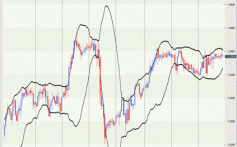Active Trading Isn t for Most Investors US News
Post on: 16 Март, 2015 No Comment

A long-term investing plan costs less (and is less risky).
Miranda Marquit
When I was younger, I was wary of investing because I thought of it in terms of active trading. I thought I needed market timing skills and a great deal of luck.
Only as I learned more about investing did I realize that there are numerous strategies that can be employed, and that trading too often can be a drawback. Indeed, most of us “regular” folks are better off we don’t buy and sell all day long.
The Costs of Frequent Trading
For some, money can be made through day trading and other short-term approaches. However, for most ordinary investors, frequent trading too often means being caught with the short end of the volatility stick.
One of the problems with frequent trading is the cost. Each time you make a trade, you are charged a fee. Even if it is relatively low, flat transaction fee charged by a discount brokerage, your costs can really add up over time.
Each time you pay a fee, you reduce your real returns on an investment. Over time, just paying the fees for frequent trading can reduce the overall efficiency of your investing strategy.
Not only that, but if your frequent trading results in short-term capital gains, you pay higher taxes. Holding your investments for longer, and selling them as long-term capital gains can result in lower taxes, depending on your bracket. Selling short-term investments, though, usually means that more of your money goes to Uncle Sam .
iStockPhoto
You also can’t forget another cost of frequent trading: Locking in your losses. One of the advantages of creating an investing plan that reflects the long term is that you have a chance to put the historical trends of the rising market on your side. You have a greater chance of overall gains with a long-term approach.
Develop a Long-Term Plan
While it might be fun to trade actively, it’s also a good idea to have a long-term plan. If you want to try your hand at frequent trading, start small, with money you can afford to lose. The money you need to grow your wealth for the future should be part of a long-term investing plan.
Your long-term investing plan should focus more on the big picture, and the fundamentals. than anything else. Consider investments that can grow with overall market trends. Index funds and ETFs can make great investments for the long haul. You can usually find low-cost versions of these investments, and many brokerages will offer you a low transaction fee if you set up an automatic investment plan. You can save on fees, and watch your money grow more efficiently.
When you account for tax-efficiency and lower fees and commissions, regular investments in a tax-advantaged account can go a lot further than you might think. A short-term, frequent trading approach can be costly, and inefficient, and result in more losses than gains over time—especially if you aren’t experienced.
Frequent trading, for most investors, doesn’t work out very well. Most ordinary investors lack the experience and time to really become effective traders. Instead, you are far more likely to pay more in fees, as well as in taxes (if you do end up with short-term gains). A long-term approach, with the help of a tax-advantaged investment account, is often a better fit for most regular investors.
Miranda is a freelance contributor to several investing and personal finance web sites. She also writes for her own blog, Planting Money Seeds .














